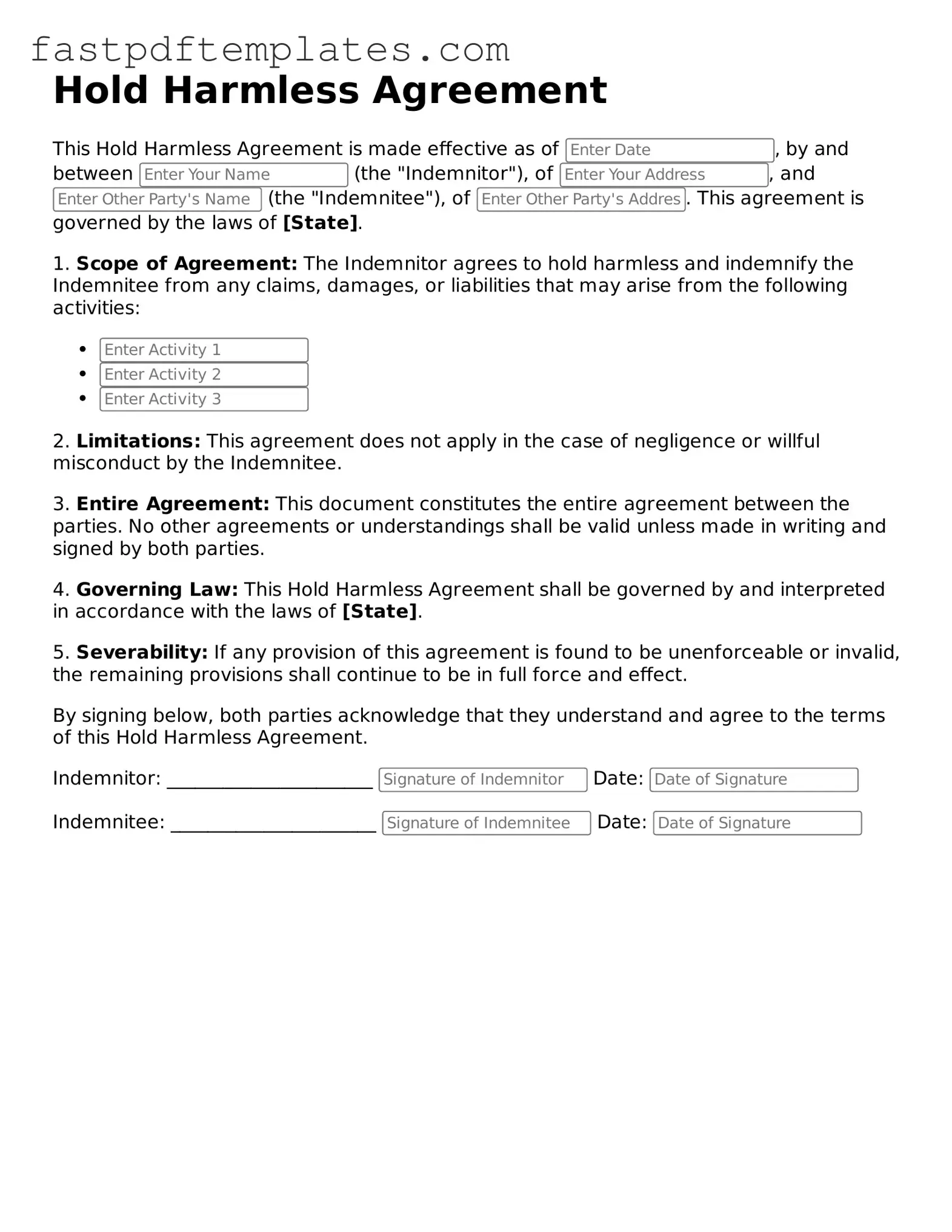Fillable Hold Harmless Agreement Document
A Hold Harmless Agreement is a legal document designed to protect one party from liability for any damages or injuries that may occur during a specified activity or event. This form is crucial for individuals and organizations looking to minimize their risk while participating in various activities. Understanding its components and implications can help ensure that all parties involved are adequately protected.
Access Document
